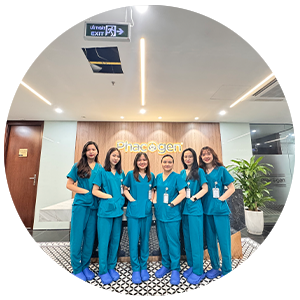2023 has seen significant advances in the field of molecular biology. New research has contributed to marking the continuous development of science and technology. Join the Phacogen Institute of Technology to review important events, new research and discoveries that marks a milestone in molecular biology and biomedicine in the past year.
The year 2023 has seen significant advances in the field of molecular biology. New research has contributed to marking the continuous development of science and technology. Let's join the Phacogen Institute of Technology to review important events, new research and discoveries that have made a mark in the field of molecular biology and biomedicine in the past year.
.
New discovery using CRISPR-Cas9 gene editing, contributing to the treatment of sickle cell disease
.
Sickle cell disease (SCD) is caused by a defect in the β-globin subunit of mature hemoglobin. Hemoglobinopathies are genetic diseases that affect the hemoglobin molecule. Abnormal hemoglobin causes red blood cells to become deformed, stiff, and sticky. SCD produces deformed red blood cells, hemolysis, and vascular occlusion leading to progressive organ damage and premature death.
.
Method for screening and electroporation of cells from healthy individuals, transplanted and edited with diseased individuals. The results of the disease gradually decrease over time.
.
In a groundbreaking study, researchers used CRISPR-Cas9 technology to target the HBG1 and HBG2 gene promoters, enhancing the expression of fetal hemoglobin. A specific guide RNA was identified (gRNA-68), which induced the highest levels of fetal hemoglobin in edited CD34+ plasma cells from healthy and sickle cell disease subjects. Named OTQ923, these targeted edited cells showed long-term stability without epigenetic mutations.
.
In a phase 1-2 clinical study, infusion of autologous OTQ923 into patients with acute sickle cell disease was effective in maintaining stable fetal hemoglobin cell proliferation (19.0-26, 8%). This approach highlights the precision of CRISPR-Cas9 in gene therapy, opening up transformative potential for sickle cell disease treatment.
.
.
This study evaluated carrier screening for cystic fibrosis, hemochromatosis, and spinal muscular atrophy in 9151 pregnant individuals, using single-reflex gene noninvasive prenatal screening (sgNIPS) without Need screening from father. Of those identified as carriers, 98.7% received informative results with a 99.4% negative predictive value for sgNIPS.
.
The average positive predictive value was 48.3%, with individualized values accurately reflecting the affected pregnancy. This approach, even without paternal screening, provides a timely and accurate assessment of fetal risk during pregnancy, providing an alternative to counseling and management that does not require asked for a sample from the father.
.
.
Identifying critically ill newborns for whole-genome sequencing (WGS) in neonatal intensive care units (NICUs) is currently a labor-intensive process. This study introduces an automated approach using clinical natural language processing (CNLP) and a machine learning-based tool, the Mendelian Phenotype Search Engine (MPSE).
.
Successfully tested in the NICUs at Rady Children's Hospital and the University of Utah, MPSE demonstrated high accuracy in patient selection for WGS (AUC of 0.86 and 0.85, respectively). This automated procedure provides a promising solution for efficiently prioritizing infants with WGS, potentially surpassing the diagnostic yield of current manual selection procedures.
.
.
Family history is the standard indirect measure of genetic susceptibility in clinical care, while the polygenic risk score (PRS) has recently been shown to have the potential to more directly capture risk. inheritance in many diseases. This study provides a portfolio of risk estimates for both family history of disease and PRS, and highlights opportunities for a more comprehensive way to assess genetic disease risk for common diseases. often.





